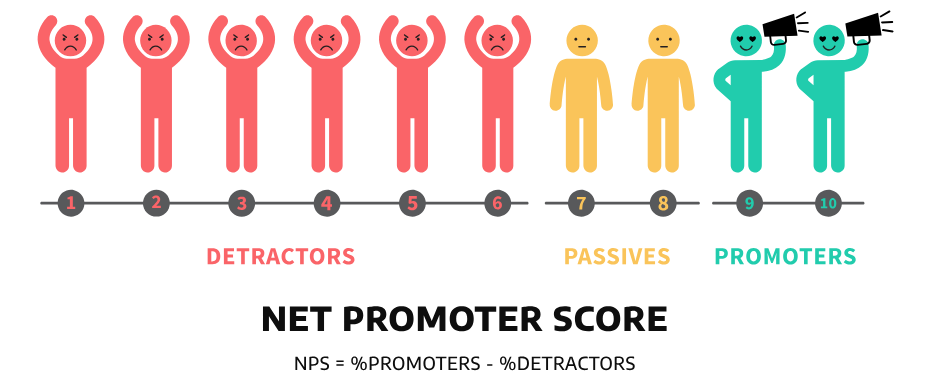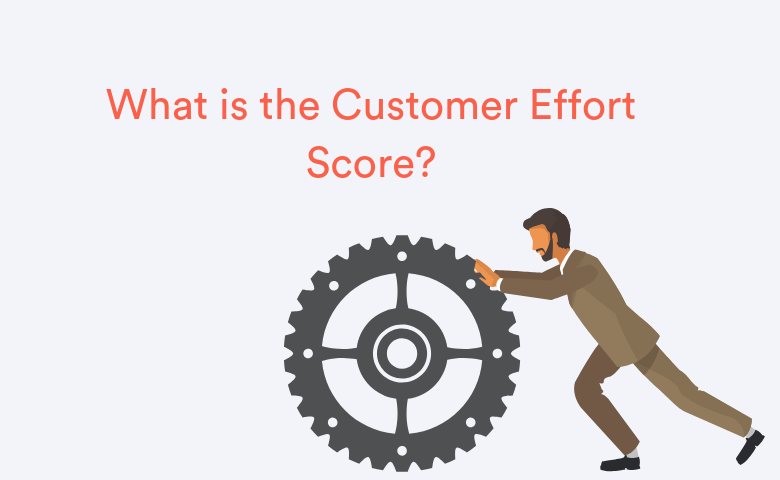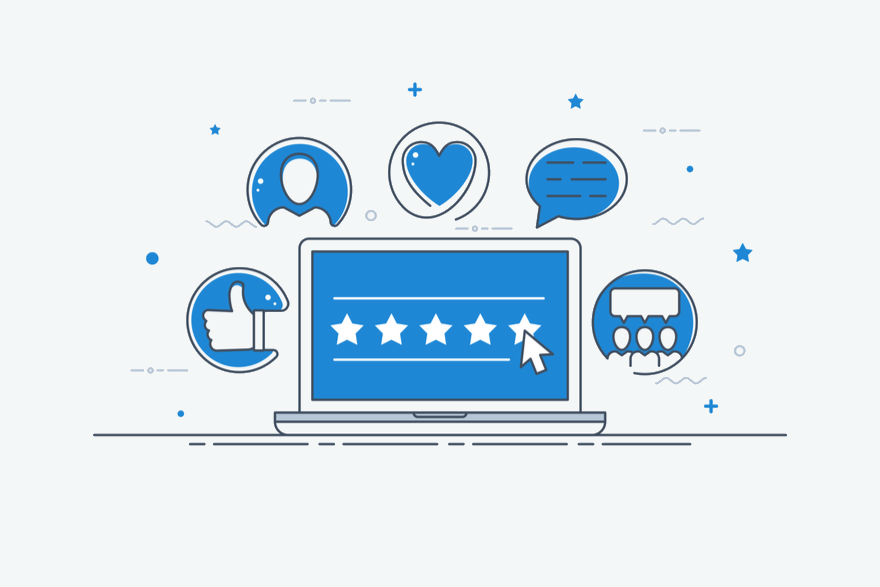9 Important Customer Satisfaction Metrics to Target in 2023
- Sameer Sheikh
- Oct 4, 2023
- 5 min read
In today's fiercely competitive business landscape, customer satisfaction stands as the ultimate arbiter of success. It's not merely a measure of contentment but a powerful indicator of a company's ability to thrive. In this digital age, where customers wield unprecedented influence, the importance of ensuring their satisfaction cannot be overstated.
Measuring customer satisfaction through well-defined metrics is the compass that guides businesses toward growth, loyalty, and sustainable success. It's no longer a choice but a necessity for those looking to stay ahead in 2023. Let's explore 9 metrics that businesses must target to not just survive, but thrive in the ever-evolving world of commerce.

1. Customer Satisfaction (CSAT) Score
The Customer Satisfaction (CSAT) Score is a crucial metric used to evaluate overall customer contentment with a company's products, services, or interactions. Typically measured through surveys, it gauges the level of satisfaction customers feel after specific interactions or experiences.
The calculation method involves asking customers to rate their satisfaction on a numerical scale, often from 1 to 5 or 1 to 10, with higher scores indicating higher satisfaction. The CSAT score is then calculated as the percentage of customers who rated their experience above a certain threshold (e.g., 4 or 5).
Companies utilize CSAT scores effectively to identify areas for improvement, track the impact of changes, and benchmark their performance against industry standards. For example, an e-commerce platform may use CSAT scores to refine its checkout process, resulting in increased customer satisfaction and higher sales.

2. Net Promoter Score (NPS)
Net Promoter Score (NPS) serves as a key metric for assessing customer loyalty and advocacy. It's designed to gauge the likelihood of customers recommending a company's products or services to others.
To calculate NPS, customers are asked a single question: "On a scale of 0 to 10, how likely are you to recommend our company to a friend or colleague?" Based on their responses, customers are categorized into Promoters (scores 9-10), Passives (scores 7-8), and Detractors (scores 0-6). NPS is then derived by subtracting the percentage of Detractors from the percentage of Promoters.
Organizations can use NPS to identify customer loyalty and possibilities for growth. For instance, a company can improve NPS by enhancing call center experiences, resulting in higher customer retention and referrals, proving that NPS is a powerful gauge of customer loyalty and growth potential.

3.Customer Effort Score (CES)
Customer Effort Score (CES) measures the ease with which customers can interact with a company. It focuses on minimizing the effort customers need to expend to resolve issues or complete tasks. CES helps identify friction points in the customer journey by asking a straightforward question, such as, "How much effort did you have to put forth to get your issue resolved?" Responses are typically on a scale from "very low effort" to "very high effort."
For instance, companies like Amazon have reduced customer effort by implementing one-click shopping, simplifying the checkout process. This has led to increased customer satisfaction and loyalty, demonstrating that minimizing customer effort can have a profound positive impact on overall satisfaction.

4. Customer Churn Rate
Churn rate offers valuable insights into customer satisfaction, competitive challenges, and overall business health. High churn rates can erode profits and damage a company's reputation. Churn rate is calculated by dividing the number of customers lost during a period by the total number of customers at the beginning of that period, expressed as a percentage. Contributing factors often include subpar customer experiences, product dissatisfaction, pricing concerns, or enticing offers from competitors.
To reduce churn, businesses must enhance customer experiences, address pain points, and cultivate lasting relationships. Strategies encompass improved support, product quality, personalization, loyalty programs, competitive pricing, responsive feedback handling, and sustained customer engagement. These efforts collectively nurture customer loyalty and strengthen business sustainability.

5. First Response Time (FRT)
First Response Time (FRT) is a crucial metric that quantifies the speed at which a company responds to customer inquiries, typically in customer support. It measures the time elapsed from when a customer submits a query or issue until they receive the first meaningful response. A quick first response significantly impacts customer satisfaction. It conveys attentiveness and a commitment to resolving issues promptly. Customers feel valued, heard, and more likely to perceive their concerns as a priority.
To reduce FRT and enhance customer experiences, businesses can employ practices such as:
Efficient Ticket Routing: Directing inquiries to the right agents or departments swiftly.
Automation: Implementing chatbots or auto-responses for instant acknowledgment.
Agent Training: Equipping agents with the skills and resources to provide speedy yet accurate responses.
Priority Queue Handling: Prioritizing urgent inquiries to receive immediate attention.
Performance Monitoring: Constantly analyzing FRT data to identify and address bottlenecks.

6.Average Resolution Time (ART)
Average Resolution Time (ART) plays a pivotal role in evaluating how efficiently issues are resolved. It measures the average amount of time it takes for a company to resolve customer inquiries or problems once they are acknowledged. ART is a key indicator of customer service effectiveness and impacts overall satisfaction. To optimize resolution times, companies can employ strategies such as:
Streamlined Workflows: Implementing efficient processes for issue resolution.
Agent Training: Providing agents with the skills and tools needed for quicker problem-solving.
Automation: Utilizing automated responses and workflows for routine issues.
Priority Handling: Identifying and prioritizing critical issues for faster resolution.

7. Customer Retention Rate
Customer Retention Rate measures the percentage of customers a company successfully retains over a specific period. It directly correlates with customer satisfaction, as satisfied customers are more likely to stay loyal, repurchase, and advocate for a brand. Retention Rate is calculated by subtracting the number of new customers acquired during a period from the total customers at the start of the period, divided by the total customers at the start. A high retention rate signifies customer loyalty, consistent revenue, and long-term business sustainability.
Companies like Apple and Amazon maintain high customer retention rates by consistently delivering quality products and exceptional customer experiences. Their focus on customer satisfaction fosters lasting relationships and continuous success.

8. Customer Lifetime Value (CLV)
Customer Lifetime Value (CLV) quantifies the total revenue a business can expect to generate from a customer throughout their entire relationship. It measures the long-term value and profitability of customers, extending beyond individual transactions.
Improving customer satisfaction directly correlates with increased CLV. Satisfied customers are more likely to make repeat purchases, refer others, and remain loyal, thereby extending their lifetime value. Companies like Starbucks and Netflix prioritize CLV through personalized experiences and loyalty programs. They invest in customer satisfaction, resulting in prolonged customer relationships, higher revenue, and sustainable growth.

9. Customer Feedback and Reviews
Collecting and analyzing customer feedback and reviews is crucial for businesses as it provides invaluable insights into customer sentiments, preferences, and pain points. It is a direct line to understanding what customers truly think and feel about products, services, and overall experiences.
Businesses can use customer feedback to identify areas for improvement by spotting recurring issues, uncovering trends, and gaining a deeper understanding of customer needs. It allows for data-driven decision-making and targeted enhancements. Companies such as Airbnb and Uber actively leverage customer feedback to refine their platforms and enhance user satisfaction. By listening to their customers, they've not only improved their services but also built enduring trust and loyalty.
Conclusion
In the ever-evolving landscape of customer-centric business, these vital metrics provide a compass for navigating the path to success. By understanding, measuring, and acting upon these metrics, companies can unlock the true potential of customer satisfaction, loyalty, and long-term growth. In 2023 and beyond, the customer-centric approach is not just a strategy; it's the very foundation of sustainable success. By continually monitoring and optimizing these metrics, businesses can forge lasting relationships, drive profitability, and stay ahead in a dynamic and competitive marketplace.
Commenti